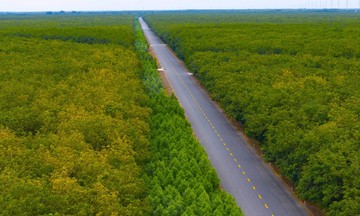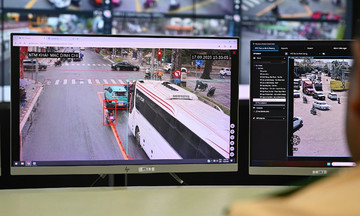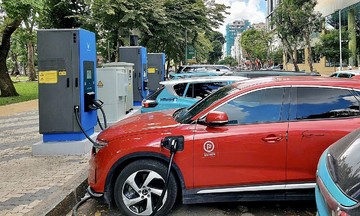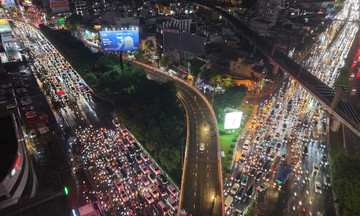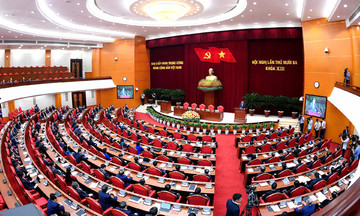The Vietnam Expressway Development Investment Corporation (VEC), the investor of the Ho Chi Minh City - Long Thanh - Dau Giay expressway expansion project, has submitted a traffic management plan to relevant agencies for feedback before construction begins.
Launched as a priority project, the expressway expansion broke ground on 19/8 with a total investment of over 16,300 billion VND. The upgrade covers nearly 22 km, from the Ring Road 2 intersection in Ho Chi Minh City to the intersection with the Bien Hoa - Vung Tau expressway. The 5 km section from Ring Road 2 to Ring Road 3 will be expanded from 4 to 8 lanes.
The remaining 15 km section, from Ring Road 3 to the Bien Hoa - Vung Tau expressway intersection (excluding Long Thanh bridge), will be upgraded from 4 to 10 lanes. The Long Thanh bridge, the largest on the route at over 2.3 km long, will have a new 5-lane branch added, resulting in a complete 8-lane bridge with two emergency lanes.
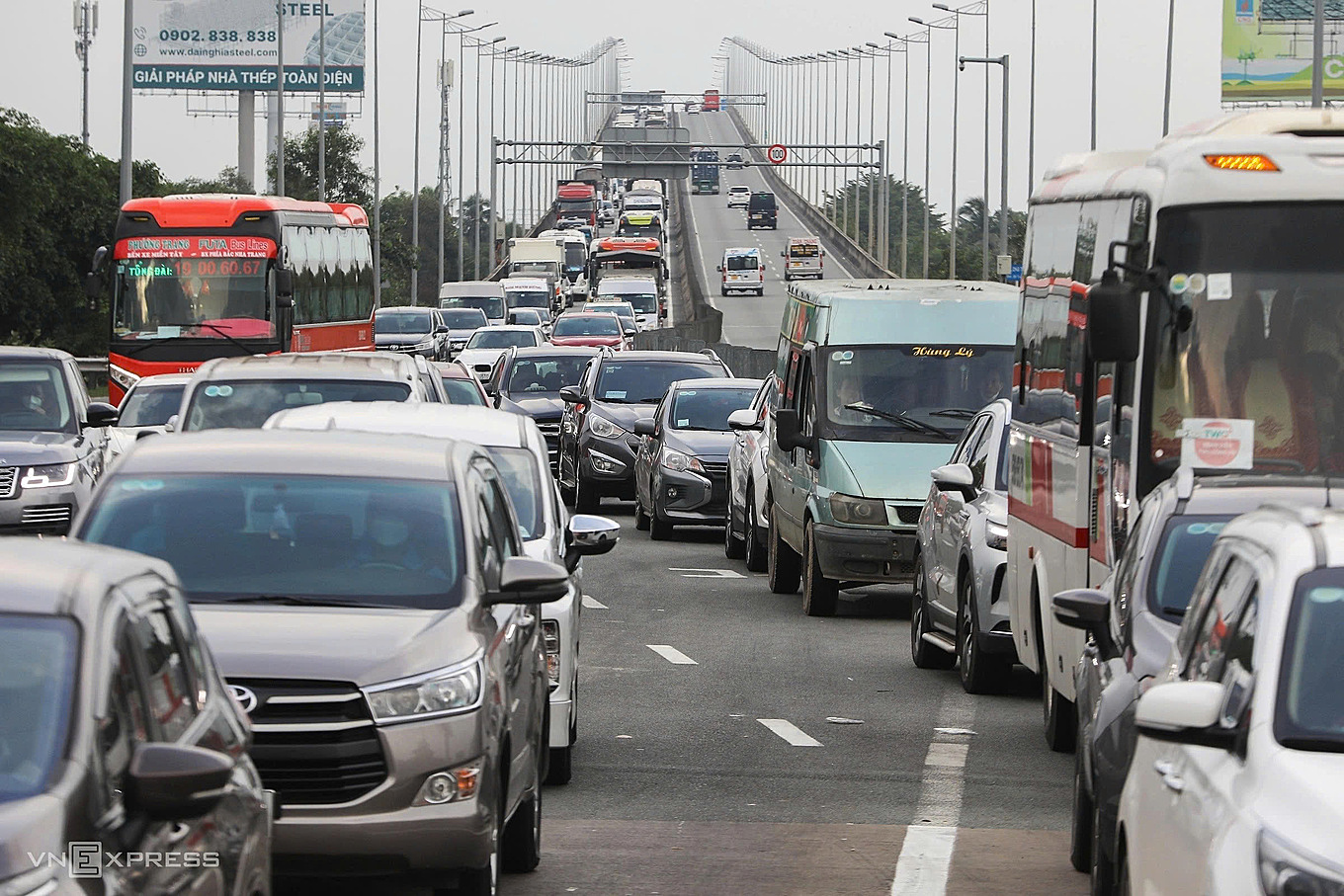 |
Congestion on the Ho Chi Minh City - Long Thanh - Dau Giay expressway. Photo: Quynh Tran |
Congestion on the Ho Chi Minh City - Long Thanh - Dau Giay expressway. Photo: Quynh Tran
According to VEC, establishing service roads for construction access is currently impossible. Therefore, the existing expressway must be used for major project components. The consultant's plan suggests that for the two main construction packages (XL01 and XL02), critical elements like girder installation and upper structure work for the elevated sections will impact traffic flow and operational safety.
Each package has 4 main construction phases. The first phase involves foundation work, pier and abutment construction, and cap beam installation. During this phase, contractors can access the site through local roads. This is considered the most convenient phase as it doesn't disrupt expressway operations.
After completing these tasks, contractors will move to girder installation, the most challenging part due to space limitations. Conventional methods and service roads won't be feasible. The expressway itself will be used to transport girders, materials, machinery, and equipment.
The final two phases involve bridge deck construction, completing the upper structure, organizing traffic on the expanded area, and upgrading the existing road surface.
To ensure safety and minimize congestion during construction, VEC emphasizes the importance of inter-agency coordination for effective traffic management. Scientifically designed, stage-specific implementation plans are also crucial.
The proposed plan includes strict management of personnel, equipment, and vehicles entering and exiting the construction site. Contractors will optimize construction areas to minimize traffic disruption. Traffic signs and personnel will be deployed for remote traffic diversion. Within the construction zone, materials and equipment will be stored appropriately with safety barriers. Construction waste will be promptly removed to designated disposal sites, and dust and noise control measures will be implemented.
Additionally, speed limits on the expressway may be adjusted for safety, depending on the situation. Girder installation will be carried out during off-peak hours at night, from 10 PM to 5 AM the following day, to minimize traffic impact.
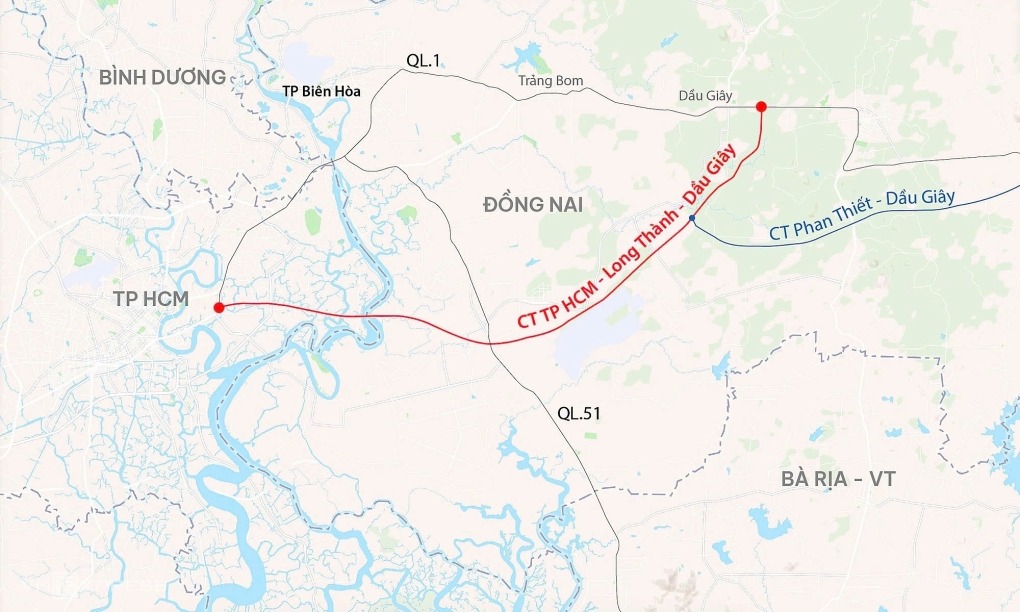 |
Route of the Ho Chi Minh City - Long Thanh - Dau Giay expressway. Graphic: Khanh Hoang |
Route of the Ho Chi Minh City - Long Thanh - Dau Giay expressway. Graphic: Khanh Hoang
Opened in 2015, the 55 km, 4-lane Ho Chi Minh City - Long Thanh - Dau Giay expressway, with two emergency stopping lanes, connects Ho Chi Minh City and Dong Nai province. After 10 years of operation, the route experiences frequent congestion on weekends and holidays due to high traffic volume, currently averaging 60,000-70,000 vehicles daily. Despite careful traffic management planning, VEC acknowledges that congestion during construction is unavoidable on this vital artery connecting to Ho Chi Minh City. They request public understanding to ensure the project progresses on schedule.
The expressway expansion is scheduled for completion by the end of 2026, with the Long Thanh bridge finished in Quarter 1 of 2027. Besides alleviating congestion at the gateway to Ho Chi Minh City, the project will enhance connectivity with Long Thanh International Airport, also slated to open next year.
Giang Anh





